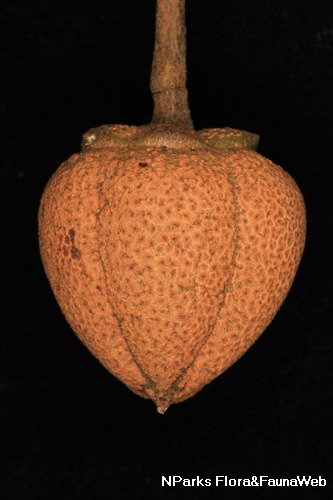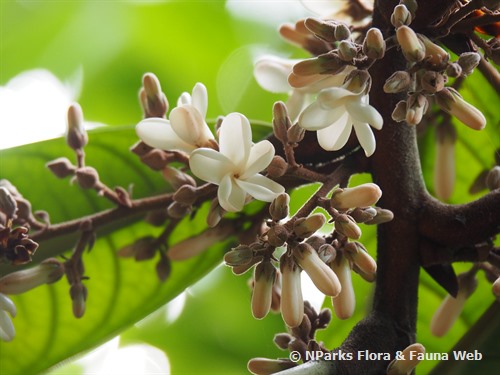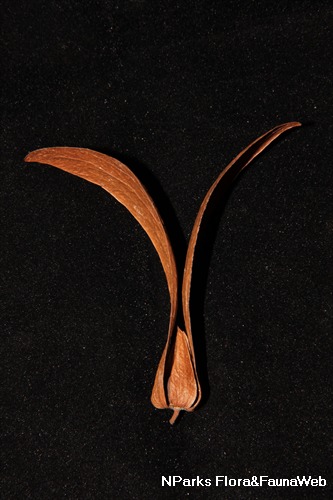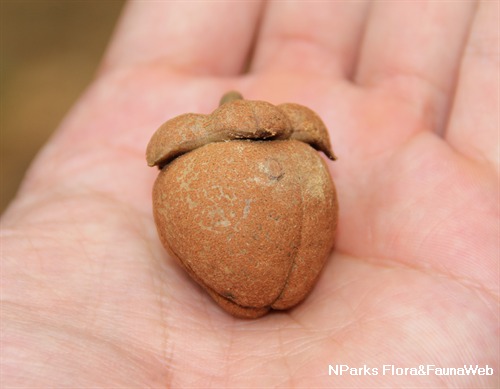
Name
Classifications and Characteristics
| Plant Division | Angiosperms (Flowering Seed Plants) |
|---|---|
| Plant Growth Form | Tree |
| Lifespan (in Singapore) | Perennial |
| Mode of Nutrition | Autotrophic |
| Maximum Height | 20 m |
Biogeography
| Native Distribution | Peninsular Malaysia |
|---|---|
| Native Habitat | Terrestrial |
| Preferred Climate Zone | Tropical |
| Local Conservation Status | Non-native |
Description and Ethnobotany
| Growth Form | Small tree, bark pale brown to grey and sometimes flaky. |
|---|---|
| Foliage | Green obovate to elliptic-lanceolate leaves, alternate arrangement, thinly coriaceous, measuring about 7 - 24 cm long and 2 - 9.5 cm wide, petiole about 8 - 12 mm long. |
| Flowers | White to cream flowers borne on axillary and terminal panicle inflorescence up to 5 cm long. |
| Fruit | Fruit is a brown ovoid nut. |
| Others - Plant Morphology | Listed as Critically Endangered based on the 2011 IUCN Red List of Threatened Species. |
| Etymology | Genus Vatica is from the Latin word"vates" which means "a foreteller or prophet". Species lobata means with lobes. |
Landscaping Features
| Desirable Plant Features | Ornamental Flowers, Ornamental Fruits |
|---|---|
| Landscape Uses | Parks & Gardens, Small Gardens |
Fauna, Pollination and Dispersal
| Pollination Method(s) | Biotic (Fauna) |
|---|---|
| Seed or Spore Dispersal | Abiotic |
Plant Care and Propagation
| Light Preference | Full Sun |
|---|---|
| Water Preference | Moderate Water |
| Plant Growth Rate | Moderate |
| Rootzone Tolerance | Moist Soils, Well-Drained Soils |
| Propagation Method | Seed |
Foliar
| Mature Foliage Colour(s) | Green |
|---|---|
| Foliar Arrangement Along Stem | Alternate |
| Foliar Attachment to Stem | Petiolate |
| Foliar Shape(s) | Non-Palm Foliage (Obovate, Lanceolate, Elliptical) |
Floral (Angiosperm)
| Flower Colour(s) | Cream / Off-White, White |
|---|---|
| Flower Grouping | Cluster / Inflorescence |
| Inflorescence Type | Panicle |
Image Repository
Others
| Master ID | 30507 |
|---|---|
| Species ID | 4816 |
| Flora Disclaimer | The information in this website has been compiled from reliable sources, such as reference works on medicinal plants. It is not a substitute for medical advice or treatment and NParks does not purport to provide any medical advice. Readers should always consult his/her physician before using or consuming a plant for medicinal purposes. |

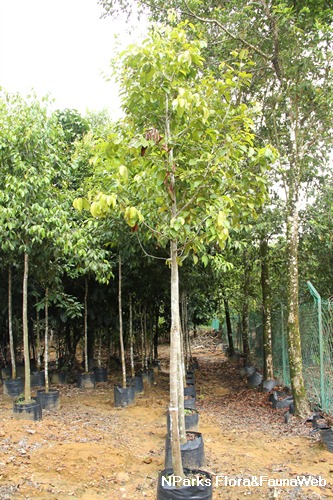
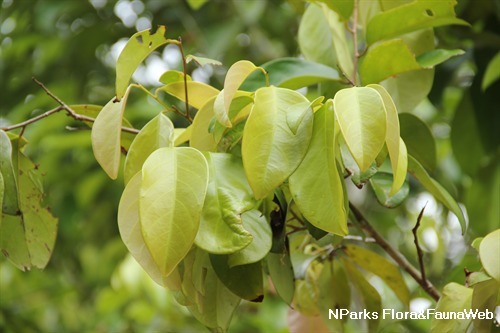
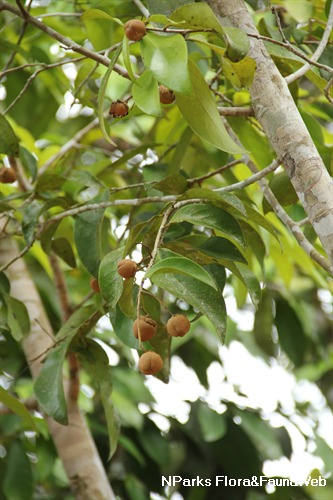
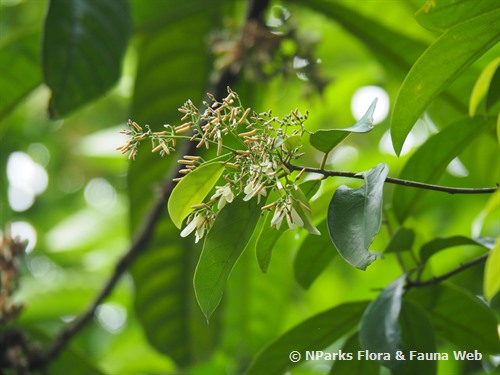
-(18).jpg)
